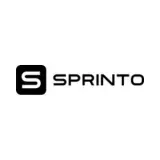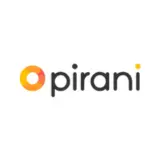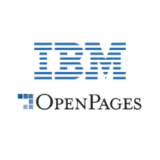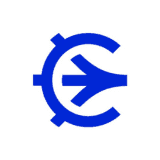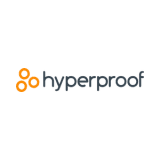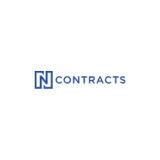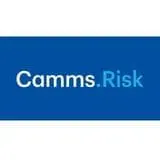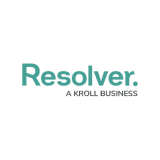- Free Version: Available for teams of up to 10
- Pricing: Premium plan $24/month (with a free 30-day trial period)
- Platforms supported: Available on mobile app (iOS and Android) or a web-based software
Why use SafetyCulture?
SafetyCulture offers a comprehensive solution simplifying risk assessment, providing a holistic view of enterprise risk management. The platform helps organizations create effective operational risk management to ensure seamless workflows and mitigate potential disasters. With SafetyCulture, businesses can effortlessly comply with regulations while consolidating their compliance and risk management needs in one centralized platform. The software seamlessly integrates into the organization’s workflow and includes dedicated onboarding support to cater to unique business requirements.
Features:
- Protect your business from potential disasters or lawsuits by conducting regular digital risk assessments.
- Streamline, simplify, and automate risk management and compliance practices in one platform for safe operations, legal compliance, and continuous improvement.
- Provide teams with updates on new and existing risks using Heads Up, on-the-job training courses, and on-demand custom reporting.
- Reduce errors, disruptions, and downtime by tracking key risk indicators from the platform’s robust dashboard.
- Minimize the negative impacts of potential risks through routine inspections and corrective actions.
Why use Sprinto?
Sprinto is a cloud-based software that assists with compliance automation and operational risk management. It helps users effectively manage risks by accurately mapping them to appropriate controls. This tool enables risk managers to assess the true impact of information security risks using industry benchmarks, systematically manage risks, minimize their impact, and confidently prevent failures.
Features:
- Comprehensive risk profile
- Custom risks impact scores
- Automatic risks mapping
- Free Version: None
- Pricing: Custom pricing
- Platforms supported: Web
Why use Pirani?
Pirani is an operational risk management solution that streamlines operational risk tasks. The solution is designed to meet various local and international standards and regulations, ensuring proactive regulatory compliance and business continuity. It aids financial, insurance, and private industries adhere to ISO 31000, COSO ERM, Sabarnes Oxley, ISO 27001, ISO 19600, Basel 1, and Basel 2.
Features:
- Centralized risk information
- Custom fields and parameters
- Risk indicators and reporting
- Free Version: Yes
- Pricing: Starts at $276/month, billed annually
- Platforms supported: Web, Android, and iOS
Why use IBM OpenPages?
IBM OpenPages is a solution that offers AI-based data governance, risk management, and regulatory compliance capabilities. It centralizes risk management functions by providing a comprehensive view that aids in identifying, managing, monitoring, and reporting risk and regulatory compliance. IBM OpenPages assists security teams in identifying and addressing issues through visualizations, customization options, and contextual insights into data points.
Features:
- Predictive insights
- Automated workflows
- Third-party integrations
- Free Version: None
- Pricing: Starts at $3,750 for a maximum of 10 users
- Platforms supported: Web and On-premise
Why use Risk Cloud?
LogicGate’s Risk Cloud helps businesses maintain compliance and manage operational risks according to changing needs and regulatory requirements. It includes a range of specialized applications and advanced technology to support risk management teams in developing scalable and industry-appropriate risk strategies. The solution suits various industries such as software, fintech, telecom, banking, insurance, investment services, healthcare, pharmaceuticals, medical devices, oil & gas, utilities, and alternative energy.
Features:
- Workflow automation
- Third-party integration
- Version control
- Free Version: None
- Pricing: Custom pricing
- Platforms supported: Web
Why use Hyperproof?
Hyperproof is a risk and compliance management platform that automates workflows, prepares for audits, and mitigates operational risks. Teams can identify operational loss priorities and track issues from a centralized system. Hyperproof’s risk framework maps controls to compliance requirements, collects evidence automatically, and monitors compliance posture in real-time.
Features:
- Audit management
- Risk prioritization
- Third-party integration
- Free Version: None
- Pricing: Custom pricing
- Platforms supported: Web
Why use Strike Graph?
Strike Graph is compliance operational risk management software that helps businesses obtain security certifications and enhance their security posture. It provides comprehensive dashboards, distributed responsibility, and strategic automation, ensuring data integrity and tracking progress across multiple frameworks.
Features:
- Automated security questionnaires
- Robust reporting
- Security certifications
- Free Version: Yes
- Pricing: Starts at $6,000/year
- Platforms supported: Web
Why use Nrisk?
Nrisk provides financial service companies with a Software-as-a-Service (SaaS)-based risk management and compliance solution. The platform enables users to understand financial risks comprehensively and offers tools to monitor and report on internal and external risk factors.
Features:
- Tailored risk assessment library
- Centralized KPI/KRI tracking
- On-demand custom reporting
- Free Version: None
- Pricing: Custom pricing
- Platforms supported: Web
Why use Camms.Risk?
Camms.Risk provides a comprehensive and integrated approach to streamline governance, risk, and compliance. Businesses can simplify their operational risk management programs by integrating auditing, compliance, vendor evaluation, IT, and incident modules. It serves industries such as defense, education, energy, finance, gaming, government, healthcare, legal, manufacturing, non-profit, pharmaceutical, telecommunications, and transport & logistics.
Features:
- Integrated workflows
- Incident investigations
- Dashboard and reporting
- Free Version: None
- Pricing: Custom pricing
- Platforms supported: Web, Android, and iOS
Why use Resolver?
Resolver is a risk management solution that automates processes to enhance existing risk cultures by evaluating risk relationships and control effectiveness. The platform helps finance, healthcare, energy, retail, and pharmaceutical industries collect risk data to understand its impact and transform it into quantifiable business metrics.
Features:
- Real-time reports
- Risk management
- Compliance management
- Free Version: None
- Pricing: Custom pricing
- Platforms supported: Web
What is Operational Risk Management Software?
Operational risk management software is a tool businesses use to identify, assess, and mitigate potential risks associated with their operations. It helps companies streamline risk management processes and improve decision-making by providing a centralized platform for tracking, analyzing, and reporting various risks. This software typically includes features such as risk assessment tools, incident tracking, compliance monitoring, and reporting capabilities, all aimed at minimizing the impact of operational risks on a company’s bottom line.
Benefits
By implementing effective operational risk management software, businesses can enjoy the following advantages:
- Enhanced risk identification – The software systematically identifies and documents potential risks across various business areas. It allows businesses to create comprehensive risk profiles, ensuring no potential risk goes unnoticed. This proactive approach enables businesses to address risks before they escalate into more significant issues.
- Streamlined risk assessment – Operational risk management software streamlines the risk assessment process by providing standardized frameworks and templates. This consistency ensures that all risks are evaluated using the same criteria, making prioritizing and allocating resources more easily. It also facilitates better decision-making by providing real-time risk data and analytics.
- Improved risk mitigation – The software enables businesses to create action plans, assign responsibilities, and track progress in mitigating identified risks. With automated reminders and notifications, the software ensures that mitigation efforts are not overlooked or delayed.
- Centralized risk data – Operational risk management software is a centralized repository for all risk-related information. This eliminates the need for multiple spreadsheets or manual documentation, making accessing and managing risk data easier. All risk information in one place enhances collaboration and communication among departments and stakeholders.
- Compliance and reporting – The software assists businesses in meeting regulatory requirements and industry standards. It provides features to track and monitor compliance efforts, ensuring that risks associated with non-compliance are minimized. Additionally, the software generates comprehensive reports and analytics, making demonstrating compliance to auditors and stakeholders easier.
- Cost savings – Businesses can avoid costly incidents and disruptions by effectively managing operational risks. Operational risk management software helps identify potential cost-saving opportunities by highlighting areas of inefficiency or vulnerability. This way, businesses can reduce operational expenses and improve profitability by addressing these issues.
Key Features
When it comes to operational risk management software, there are several key features that you should look for to ensure you are getting the best solution for your organization. Here are some of the key features to consider:
- Risk assessment and identification
- Incident reporting and tracking
- Risk mitigation and control
- Compliance and regulatory support
- Data analytics and reporting
- Integration and scalability
- User-friendly interface
Choosing the Best Operational Risk Management Software
Choosing the best operational risk management software is crucial for any organization looking to manage and mitigate risks effectively. The table below overviews the best operational risk management software, including free versions, pricing, and mobile app availability.
| Operational Risk Management Software | Free Version | Paid Plan | Mobile App |
| SafetyCulture | Yes | $24/user/month* | Yes |
| Sprinto | None | Custom pricing | None |
| Pirani | Yes | $276/month* | Yes |
| IBM OpenPages | None | $3,750 | None |
| Risk Cloud | None | Custom pricing | None |
| Hyperproof | None | Custom pricing | None |
| Strike Graph | Yes | $6,000/year | None |
| Nrisk | None | Custom pricing | None |
| Camms.Risk | None | Custom pricing | Yes |
| Resolver | None | Custom pricing | None |
* billed annually

